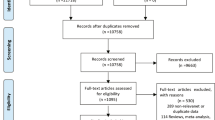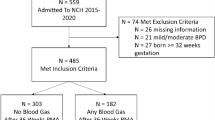Abstract
Objective:
The objective of this study is to determine how neonatologists and bioethicists conceptualize and apply the Best Interests Standard (BIS).
Study Design:
Members of the American Society for Bioethics and Humanities and the American Academy of Pediatrics Section on Neonatal-Perinatal Medicine were surveyed to determine how they conceptualized the BIS and ranked the appropriateness of forgoing life-sustaining therapy (LST).
Results:
Neonatologists’ median response supported an infant-specific BIS conceptualization that linked the infant’s and family’s interests. They did not support allowing limitations on the family’s obligations. Ethicists’ supported a conceptualization that linked the infant’s and family’s interests and limitations on the family’s obligations, a less infant-specific conceptualization. Ethicists were less or equally likely to agree with forgoing LST in seven of eight cases.
Conclusions:
Ethicists endorsed a conceptualization of the BIS that includes the effects on the family and rejected an infant-specific one. Neonatologists split between these two and rejected limiting the family’s obligations. Critical appraisal of the BIS is needed in neonatal ethics.
This is a preview of subscription content, access via your institution
Access options
Subscribe to this journal
Receive 12 print issues and online access
$259.00 per year
only $21.58 per issue
Buy this article
- Purchase on Springer Link
- Instant access to full article PDF
Prices may be subject to local taxes which are calculated during checkout


Similar content being viewed by others
References
Kopelman LM, Irons TG, Kopelman AE . Neonatologists judge the ‘Baby Doe’ regulations. N Engl J Med 1988; 318: 677–683.
Placencia FX, McCullough LB . The history of ethical decision making in neonatal intensive care. J Intensive Care Med 2011; 26: 368–384.
The initiation or withdrawal of treatment for high-risk newborns. American Academy of Pediatrics Committee on Fetus and Newborn. Pediatrics 1995; 96: 362–363.
Amendments to Child Abuse Prevention and Treatment Act, 42 USC §5106a (1984).
US GPO President’s Commission for the Study of Ethical Problems in Medicine and Biomedical and Behavioral Research Deciding to Forego Life-Sustaining Treatment: A Report on the Ethical, Medical, and Legal Issues in Treatment Decisions. US GPO: Washington, DC, 1983.
Stinson R, Stinson P . The Long Dying of Baby Andrew. Little, Brown & Co: Boston, MA, 1983.
Acknowledgements
This research was supported by an NIH K23 grant and the Texas Children’s Hospital Bad Pants Fund.
Author information
Authors and Affiliations
Corresponding author
Ethics declarations
Competing interests
The authors declare no conflict of interest.
Additional information
Supplementary Information accompanies the paper on the Journal of Perinatology website
Supplementary information
Rights and permissions
About this article
Cite this article
Placencia, F., Ahmadi, Y. & McCullough, L. Three decades after Baby Doe: how neonatologists and bioethicists conceptualize the Best Interests Standard. J Perinatol 36, 906–911 (2016). https://doi.org/10.1038/jp.2016.87
Received:
Revised:
Accepted:
Published:
Issue Date:
DOI: https://doi.org/10.1038/jp.2016.87
This article is cited by
-
Fundamentals of designing high-quality surveys: revisiting neonatal perinatal medicine survey applications
Journal of Perinatology (2023)
-
Federal regulations and neonatologists’ views on care of seriously ill infants: changes over time
Pediatric Research (2022)



